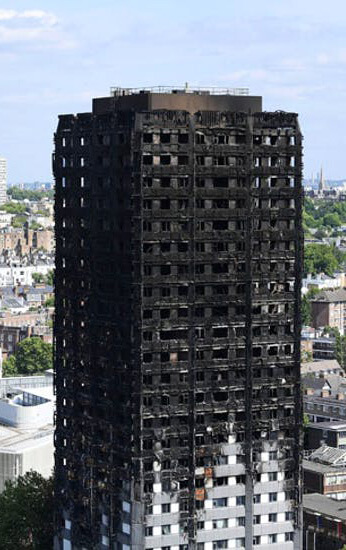
Cladding must be removed as ‘a priority’, Grenfell fire expert says
Flammable cladding must be urgently removed from Melbourne’s skyscrapers, says the engineer the British government turned to in the wake of the deadly Grenfell blaze.
Dame Judith Hackitt spent a year investigating Britain’s building regulations and fire laws after 72 people died in the devastating fire at the public housing tower in London.
Grenfell was covered in the same sort of highly flammable cladding that has now caught fire at two Melbourne towers, and Dame Judith says action needs to be taken quickly.
“With regards to cladding specifically in Victoria, provided it is clear what can and cannot be used, replacement of existing non-compliant material should be pushed as a priority,” she said.
“The challenge will be who pays for the remediation.”
Dame Judith has found many similarities between the construction industries in Britain and Australia.
Last May, she told a House of Commons committee that there were extraordinary parallels. “They have exactly the same problems with the system; no enforcement, unclear standards and a race to the bottom,” she said.
Dame Judith, who was brought to Australia this week by RMIT’s School of Property, Construction and Project Management told The Age on Monday that in Britain she uncovered “a system that simply doesn’t work, that is broken in many different ways”.
The school’s head, Ron Wakefield, said the issues Britain was confronting post-Grenfell were identical to those Melbourne faced after the Lacrosse fire in Docklands in 2014 and this month’s Neo 200 cladding blaze in Spencer Street.
Many residents of the Neo 200 building, which caught fire on February 4, remain locked out of their apartments. Eight of the units will be unusable for up to a year while repairs are made.
Hundreds of other buildings across Victoria, including hospitals, remain covered in banned cladding materials that catch fire easily and burn ferociously. Few have immediate plans to tackle the problem.
Professor Wakefield said the scale of the flammable cladding problem meant the industry needed to change. “Part of us getting [Dame Judith] out was to try and build impetus and for the industry to take this seriously,” he said.
Dame Judith said builders and building designers in Britain took many shortcuts, and that “gaming of the system” was a constant. She said there appeared to be very similar problems in the Australian system where, like England, there was a focus on “box ticking” regulatory requirements, rather than a focus on building safety.
“Construction safety is too focused on the workforce, not those who will use the buildings,” she said.
Britain’s privatised system of building surveying and inspection is similar to Australia’s, and Dame Judith said this was not a problem if handled correctly.
“Inspectors in the private sector … have to be part of the regulatory side of the equation, not working for and in the pay of the construction industry,” she said. “That’s a clear conflict of interest.”
And she said, as in Australia, Britain’s enforcement of unsafe building practices was simply “not there – because it’s under-resourced”.
When things do go wrong on Australian building projects, it is often unclear precisely who should take responsibility.
In the tribunal hearing over 2014’s Lacrosse building fire, the developer, builder, architect, fire engineer and building surveyor have, in effect, all blamed each other.
Dame Judith said this was similar to the UK, and needed to change.
“There has to be, at every stage of a building’s life cycle, someone who is clearly identified for the safety of that building.”
She said the Grenfell fire had created a sense in Britain that “we have got to change, we cannot let this happen again. … The size of the tragedy that happened in London, that sense of shock and the need to improve, that needs to reflected around the world”.
“Some of the practices that go on in this sector, when you compare it to other industrial sectors, it’s literally back in the Dark Ages.
If [a] car manufacturer discovers a flaw with a car, they can trace where every component [came from]. If they can do that for cars and aeroplanes, why can’t we do that for buildings?”
Clay Lucas is a senior reporter for The Age. Clay has worked at The Age since 2005, covering urban affairs, transport, state politics, local government and workplace relations for The Age and Sunday Age
